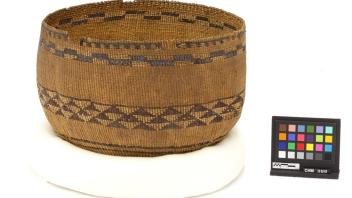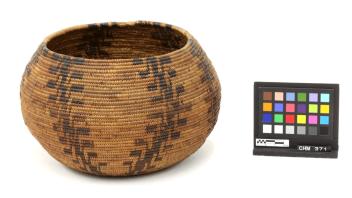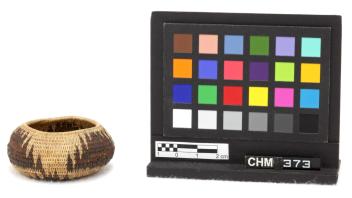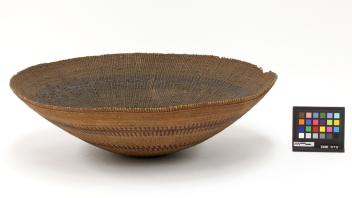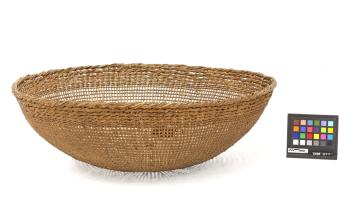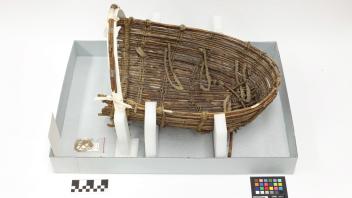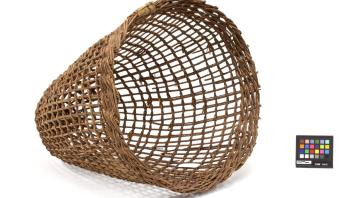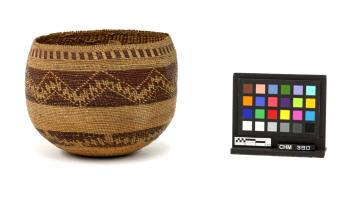Pomo Basketry
The Pomo are a diverse group of peoples, united under a language family more diverse than the Germanic languages. Political organization was centered in tribelets, small communities with a shared language usually centered around a main village. In this sense, speaking of Pomo as a single cultural-linguistic group can gloss over its diversity, though the term is used today to include all the members of the Pomo linguistic family, including the Southeastern Pomo, Eastern Pomo, Northeastern Pomo, Northern Pomo, Central Pomo, Southern Pomo, and Kashaya. In terms of basketry, this region of California was a hub for both coiled and twined baskets, and the Pomo peoples have a reputation for some of the finest fancy baskets.
Pomo twined basketry, the older of the two basket making techniques, is notable for its use in staple utilitarian basketry as well as for fancy basketry. The Pomo used all the major twining techniques used in California, including plain twining, diagonal twining, three-strand twining, and lattice twining, often employing multiple techniques on the same basket. Twining was done in both open-work and close-work. Warp sticks were usually made of willow or hazel. Designs were done using weft-substitution and usually were of a single color on a light colored background. The light color of the background weft was usually done in sedge rhizome (Carex sp.) or baked pine root (Pinus sabiniana). Red designs, the more common design color for twined baskets, were done in redbud (Cercis occidentalis) and black designs in mud-dyed bulrush (Scirpus sp.) or mud-dyed bracken fern (Pteridium aquilinum). Some special forms of baskets were made entirely of tule. Decorative attachments such as beads were sometimes used in twined baskets.
Like other Central Californian coiling cultures, the Pomo traditionally coiled in a leftward work direction, and used both three-rod and single-rod foundations. Many different start types were used, including the occasional twined started. Concealed and bound-under splices were often used. Rims were usually plain wrapped with tapered coil endings. Designs were usually done in a single color on a light background of sedge rhizome (Carex sp.) or sometimes split willow. Black designs were done in mud-dyed bulrush (Scirpus sp.) or mud-dyed bracken fern (Pteridium aquilinum). Red designs were done in redbud (Cercis occidentalis). Warps were often done in willow shoots, hazel, or honeysuckle. Many fancy coiled baskets were decorated with feathers of acorn woodpecker, valley quail, mallard duck, oriole, bluebird, meadowlark, and other birds. Design with feathers could range from sporadic to covering the basket. Beads were also used to decorate baskets, including clam shell and magnesite beads. Coiled basketry was used in both utilitarian and ceremonial contexts, though tended to have a narrow range of uses than the older form of twined basketry.



